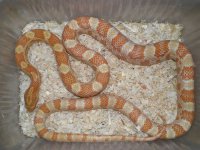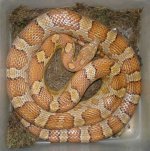MrsCornSnake
New member
I'm planning out my breeding plan for the next few years, and trying to figure out what kind of snakes I will need to purchase. I just wanted to double check to make sure that I wasn't totally off base. It will be my first time trying to selectively breed anything.
Sunglow motley + Lavender = Opal het motley, right?
Butter + Butter stripe = 50% butter het stripe, 50% butter stripe... right?
Okay, I know the last one is stupid, but I'm still checking. :crazy02:
Sunglow motley + Lavender = Opal het motley, right?
Butter + Butter stripe = 50% butter het stripe, 50% butter stripe... right?
Okay, I know the last one is stupid, but I'm still checking. :crazy02:



